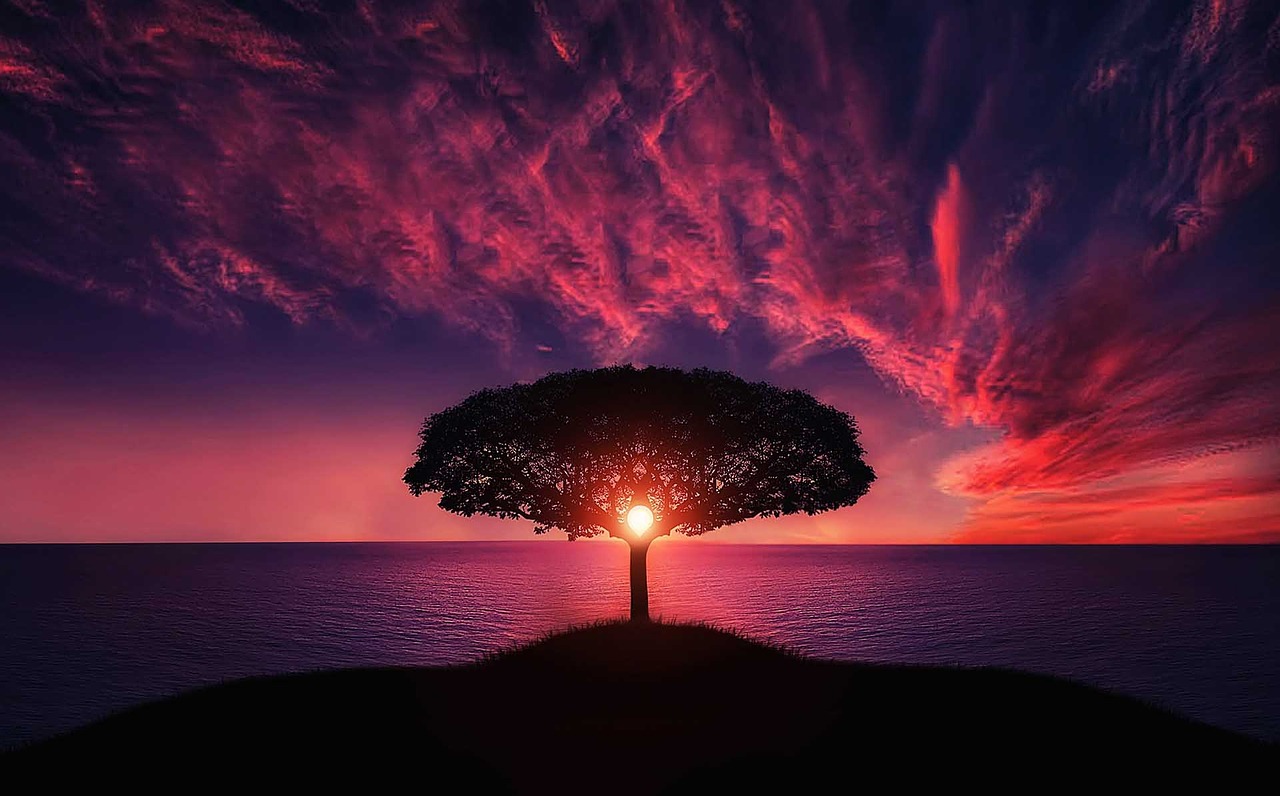By Sherry Roberts
Note: It seems like I wrote this piece a lifetime ago, but, sadly, we still are not free of violence, war, and anger. Maybe I have been thinking of this article for 15 years. (Maybe that’s why I wrote a book about the desire for revenge and how it twists our lives in Warrior’s Revenge.) Maybe the hopes expressed here will never come to pass. Or maybe the light will stream through the world tomorrow and ahimsa will flow into all of our hearts. That is my wish.
 After terrorists attacked the World Trade Center in New York and the Pentagon on September 11, 2001, I headed for the hills.
After terrorists attacked the World Trade Center in New York and the Pentagon on September 11, 2001, I headed for the hills.
In the mountains of Virginia, the days were sunny and cool and teetering on the edge of autumn. It was another world from the one I had been perceiving for the last four days via my television, radio, and Internet: a world of smoke, ruin, fury, grief, bravery, and cowardice. Terrorists had attacked America, used America’s own planes and people as missiles to destroy the Twin Towers of the World Trade Center, a symbol of freedom in enterprise, and the Pentagon, the command center of our military. The devastation seemed to overwhelm us, rising up like tsunami, but each time we were about to be crushed, we’d hear of some courageous act, some thoughtful example, some compassionate moment that would reinforce our belief in the greatness of the human spirit.
Reports of courage and carnage follow me to the mountains; the news coverage is relentless, alternately tiresome and supportive. I pass the R.J. Reynolds Building in Winston-Salem, North Carolina, a dry run of sorts for the Empire State Building (same architects, similar design, smaller size)—and think of New York. I lose count of the number of flags I see hung in hope from bridges, propped defiantly in the middle of road construction zones, fluttering rebelliously from the antennas of cars and trucks, waving in silent community from homes and mailboxes in suburban neighborhoods and isolated mountain valleys. This is America drawing together as seldom seen, flooding blood donor centers, digging in the rubble with their hands, holding prayer vigils on nearly every corner.
In the mountains, I meet up with a group of hearty, dedicated, and some might even say crazy souls who come to this place nearly every month. They are called the Piedmont Appalachian Trail Hikers, and they are the caretakers of 58 miles of the Appalachian Trial. The trail is a 2,100-mile footpath from Maine to Georgia that is probably not on any terrorist’s hit list. The homes and offices of beavers, grouse, and deer are not strategic targets. The creatures that live, work, and play here can breathe a sigh of relief from attack from above; they have only to worry about careless hikers and bullet-happy hunters.
This weekend the group disburses on various assignments: build stone steps here, create a rock drain there to divert eroding floodwater from the trail, take a chainsaw to a blowdown, lop off the prickly branches of blackberry bushes grabbing at hikers as they pass. Many of us, including me, are sent to repaint blazes, the markers that guide weary walkers home. It is easy work, walking through the woods with a bucket of paint, and allows plenty of time for reflection.
Ahimsa: Harm no Creature
Back around 200 B.C., a humble physician named Patanjali wrote the Yoga Sutra, a guide for living the right life. In this essential yogic text, Patanjali discusses the practice of ahimsa: harm no creature in thought or deed. As I slid through the forest, slapping white paint on tree trunks, I thought how difficult it is to remember the guidelines of Patanjali as we watch life being snuffed out in a ball of smoke and flame; as we hear of brave firefighters, police, and rescue workers running toward their deaths in an office inferno about to pancake and bury them forever; as we listen to the grief in the voices of distraught and exhausted family members. There is too much anger. And there is too much talk of retribution.
How can we practice ahimsa when we burn inside?
Before September 11, 2001, my practice of ahimsa (“a” means “not” and “himsa” means “harm”) rarely went beyond saving a butterfly that had settled on the net in the middle of a tennis game. I made an effort to be thoughtful during encounters with creatures that crossed my path: the family cat nagging for attention, the spider building a web over my desk, the inconsiderate driver bulldozing his way through traffic. I tried to understand the points of view of others.
Then America was attacked. And my daughter was calling from college, tears in her voice, asking what was happening, is the country safe, is her uncle based at the Pentagon okay? “Everything will be fine,” I told her. “It’s okay to be sad and even angry, but don’t let this harden your heart.”
Mahatma Gandhi, one of the most ardent believers in ahimsa in modern times, said, “I have found that life persists in the middle of destruction. Therefore, there must be a higher law than that of destruction. . . Every problem would lend itself to solution if we determined to make the law of truth and nonviolence the law of life.”
In his Autobiography of a Yogi, Paramahansa Yogananda wrote: “Let nations ally themselves no longer with death, but with life; not with destruction, but with construction; not with hate, but with creative miracles and love.”
Yogananda quoted the Mahabharata, one of the most ancient and revered of texts in India, “One should forgive, under any injury. Forgiveness is holiness; by forgiveness the universe is held together.”
Forgiveness or Retaliation?
On a narrow mountain road, I stop to let a mother grouse shepherd her children across the road. At night in my tent, I am kept awake by owls sweeping overhead searching for dinner. It is easy to do kindnesses here, to forgive vocal nightlife, to embrace peace. What will I do when I get back to the city, the media, the decisions?
Judith Lasater offers some practical advice for those seeking ahimsa in her book, Living Your Yoga, “The most effective way to practice ahimsa is to pay attention to our angry and violent thoughts. When we have an angry or violent thought, it is significant, because thoughts are the foundation for our words and our actions. If we want to change the way that we interact with the world, then we have to change our words and actions by changing our thoughts.”
Letting go of violence in thought and action is a tall order. But after watching the heroism in America this past week, I am sure Americans are up to the task. Lasater suggests beginning the process by doing little things: ring a bell before and after yoga practice to symbolize your dedication to nonviolence (and recall this dedication whenever you hear a church bell, the jangling of a cell phone, the sound of percussion instruments in a piece of music). Read about those who have dedicated their journey to living in piece: Martin Luther King Jr., Mother Theresa, Mahatma Gandhi. Incorporate mantras about peace into your daily living and yoga practice: “My intention today is to invite peace into all of my words and actions.”
Following the path of ahimsa is a slow trek; the rocks are big and our legs are tired. But we cannot stop there, in the middle of the wilderness. We must trudge on, and we must leave blazes or signs for others to follow. As I stop to fuel up the car, I read one of many signs posted by service station owners across the country. One side says, “Our hearts and prayers go out to the attack victims and their families.” The other side reminds us, “Do not judge your friend unless you stand in his place.”
_________________________
In my Maya Skye mysteries, Maya struggles with ahimsa—a lot. How do you stay committed to harming no living creature when you’re fighting for your life? Check it out and see Maya’s solutions in: Down Dog Diary (book 1), Warrior’s Revenge (book 2), and Crow Calling (book 3).





